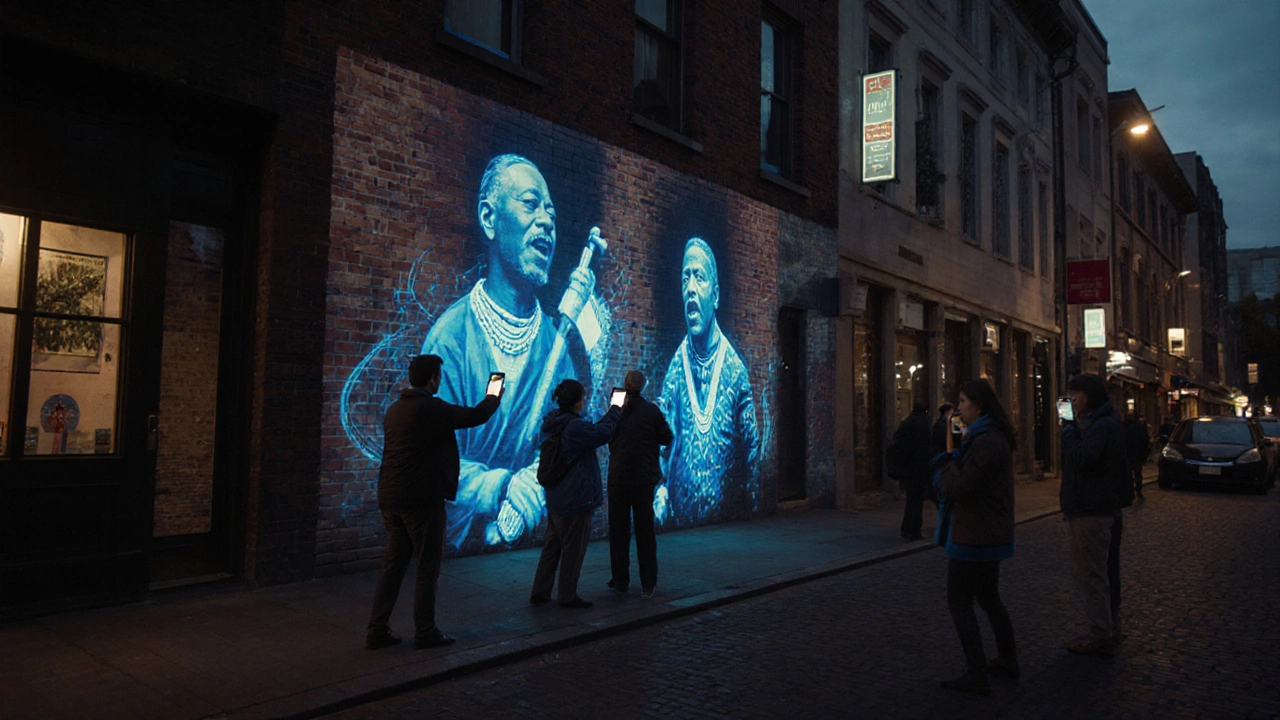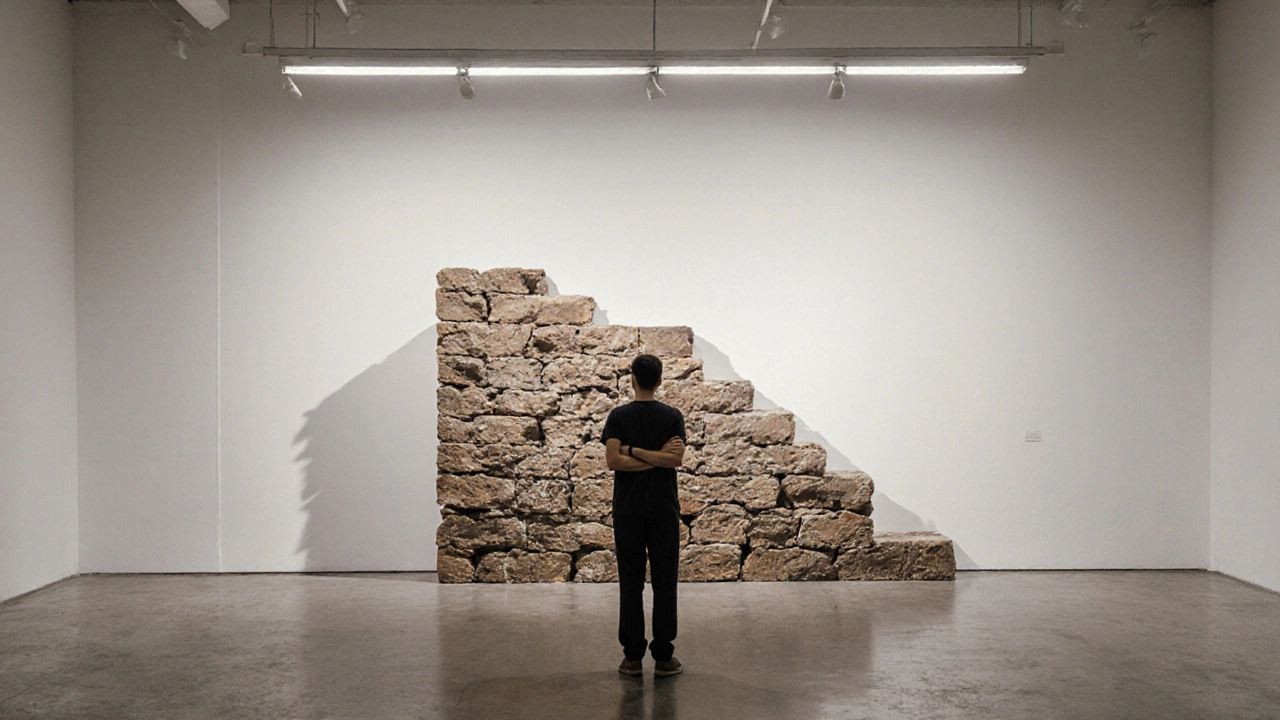When you walk into a gallery and see a pile of bricks stacked unevenly, a video of someone blinking for eight hours, or a canvas splattered with what looks like spilled coffee - you might wonder: contemporary style isn’t just about looks. It’s about context. It’s about what’s happening now, and why it matters.
Contemporary art isn’t what’s new - it’s what’s now
Many people mix up modern art and contemporary art. They’re not the same. Modern art covers the period from the 1860s to the 1970s - think Picasso, Matisse, Pollock. It broke rules, challenged tradition, and redefined beauty. Contemporary art starts where modern art ends. It’s everything made from the 1970s to today. And it doesn’t have one look. It doesn’t follow one style. It doesn’t even need to be beautiful.
Contemporary artists don’t paint sunsets or portraits to impress collectors. They use art to ask questions: Who owns the land? Why do we consume so much? What does identity mean when you can change it online? The medium doesn’t matter as much as the message. A sculpture made from recycled plastic bags, a sound piece using voice recordings from refugee camps, or a website that lets viewers alter a painting in real time - these are all contemporary art.
It’s not about technique - it’s about intent
Traditional art valued skill. A perfect drawing, a flawless brushstroke, a lifelike portrait - those were signs of mastery. Contemporary art often flips that. You don’t need to know how to draw to make contemporary art. You need to know what you’re trying to say.
Take Yoko Ono’s Cut Piece from 1964. She sat on stage and invited the audience to cut pieces of her clothing off. No brush. No canvas. Just presence, vulnerability, and a question about power and consent. That’s contemporary style. It’s not about how well you execute - it’s about how deeply you provoke.
Another example: Ai Weiwei’s Sunflower Seeds. Millions of hand-painted porcelain seeds filled the floor of London’s Tate Modern. Each one unique, made by Chinese artisans. The piece looked like a simple carpet. But it spoke to mass production, individuality in a crowd, and the invisible labor behind global consumer goods. The technique was traditional - porcelain painting - but the meaning was entirely current.
Materials are everything - and nothing
Contemporary artists use anything they can get their hands on. You’ll find art made from:
- Old smartphones and broken electronics
- Used coffee grounds and tea bags
- Plastic waste from oceans
- Soil from war zones
- AI-generated images
- Live animals (controversial, but used)
- Blockchain tokens
Why? Because the materials carry meaning. A painting made from fabric torn from a refugee’s tent isn’t just pigment on canvas - it’s testimony. A sculpture built from e-waste isn’t just metal and plastic - it’s a warning.
And then there’s digital art. NFTs sparked a firestorm, but they’re not the whole story. Many artists use digital tools to explore identity, surveillance, and virtual spaces. A digital portrait that changes based on your facial expressions? That’s not a gimmick. It’s a commentary on how we perform ourselves online.

Contemporary art doesn’t hang on walls - it lives in the world
Forget the white gallery wall. Contemporary art often lives outside traditional spaces. It’s in parks, on billboards, in abandoned buildings, on TikTok, in public protests.
Banksy’s street art isn’t just graffiti - it’s political action. His 2018 piece Love is in the Bin, which self-destructed moments after being auctioned, turned a sale into a performance. The artwork became a meme, a news story, a symbol of rebellion against the art market itself. That’s contemporary style: the art doesn’t just exist - it reacts.
In New Zealand, artists like Lisa Reihana have used augmented reality to overlay Māori stories onto colonial-era paintings. Visitors point their phones at old portraits and see ancestors speaking, singing, challenging the narrative. The art isn’t static. It’s alive. It’s interactive. It’s correcting history.
Who decides what’s contemporary?
There’s no official list. No museum board that votes on it. Instead, contemporary art is shaped by a messy mix of:
- Artists pushing boundaries
- Critics and curators framing the conversation
- Collectors buying what’s talked about
- Public reactions - sometimes outrage, sometimes awe
- Technology enabling new forms
What’s considered contemporary today might be dismissed as nonsense tomorrow. And that’s the point. Contemporary art thrives on uncertainty. It resists being pinned down. It changes as the world changes.
Twenty years ago, a video of someone staring at a camera for hours might have been called boring. Today, it’s seen as a meditation on attention spans in the digital age. The same piece, different meaning - because the culture shifted.

Contemporary style doesn’t have to be understood - it has to be felt
You don’t need to ‘get’ contemporary art to experience it. You don’t need an art degree. You just need to be willing to sit with discomfort. To ask: Why is this here? What is it trying to say? What does it make me feel?
Some pieces will frustrate you. Some will make you angry. Some will move you to tears. That’s not a failure - that’s success. Contemporary art isn’t designed to be decorative. It’s designed to unsettle, to reflect, to challenge.
Look at the work of artist Taryn Simon. She photographed the rooms where U.S. government officials made decisions about war, torture, and surveillance. The rooms looked ordinary - desks, chairs, windows. But the weight of what happened in those spaces? That’s what the art carries. You don’t need to know the details to feel the silence.
Contemporary art is a mirror - not a decoration
At its core, contemporary style is about honesty. It doesn’t pretend the world is pretty. It doesn’t offer escape. It holds up a mirror and asks: What are we doing? What are we ignoring? Who are we becoming?
It’s art made by people living right now - in a world of climate crisis, AI, mass migration, social media, and political fractures. It’s messy. It’s loud. It’s quiet. It’s uncomfortable. And that’s exactly why it matters.
If you walk away from a contemporary piece and feel confused, unsettled, or even angry - you’re not missing something. You’re experiencing it.
Is contemporary art the same as modern art?
No. Modern art refers to works made between the 1860s and 1970s - artists like Van Gogh, Mondrian, and Warhol. Contemporary art is everything made since the 1970s to today. Modern art broke from tradition; contemporary art reflects the complexities of today’s world - technology, identity, politics, and climate.
Do you need to be an expert to understand contemporary art?
No. You don’t need an art degree. Contemporary art doesn’t reward knowledge - it rewards curiosity. Ask yourself: What do I see? How does it make me feel? Why might the artist have made this? There’s no single correct answer. Your reaction is part of the meaning.
Why does contemporary art sometimes look like nothing?
Because it’s not about how it looks - it’s about what it means. A single line on a wall might represent a border. A pile of bricks might symbolize the weight of history. What seems empty is often full of context. The meaning comes from the artist’s intent and the world around us - not from technical skill.
Can anything be called contemporary art?
Not anything - but the bar is low. If an artist presents something with intention and context - in a gallery, online, or in public - and it sparks conversation about current issues, it can be considered contemporary art. It’s not about materials or beauty. It’s about relevance, critique, and cultural timing.
Is digital art really contemporary art?
Yes. Digital tools are part of today’s reality. Artists use AI, virtual reality, blockchain, and social media to explore identity, surveillance, and data. A digital portrait that changes based on your emotions isn’t just tech - it’s a reflection of how we perform ourselves online. Digital art is one of the most active areas in contemporary practice today.
Why do people say contemporary art is overpriced?
Because the art market often values fame and controversy more than craftsmanship. A piece might sell for millions not because it’s beautiful, but because it made headlines, challenged norms, or was owned by a famous collector. The price reflects cultural power, not just artistic effort. That’s part of what contemporary art critiques - the very system that sells it.

